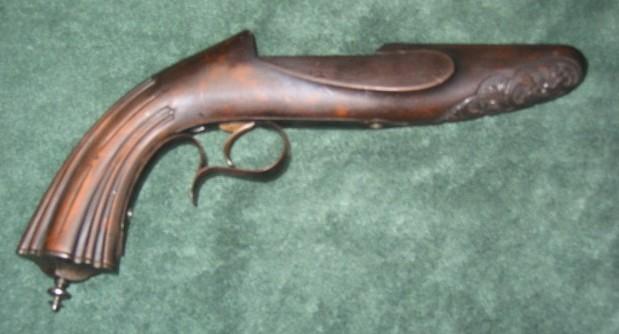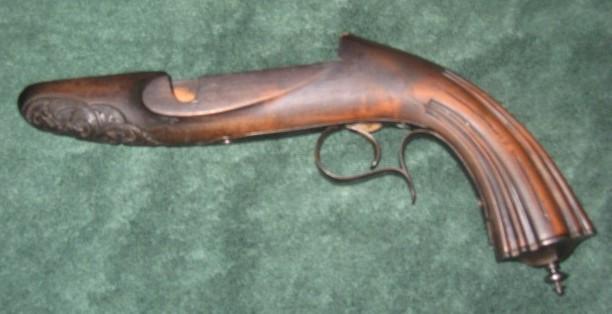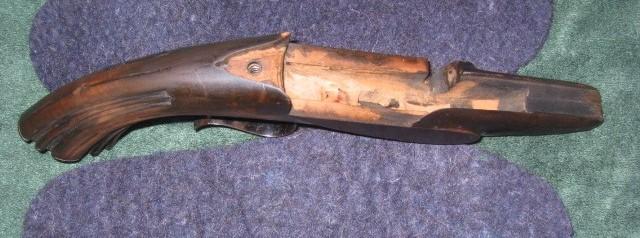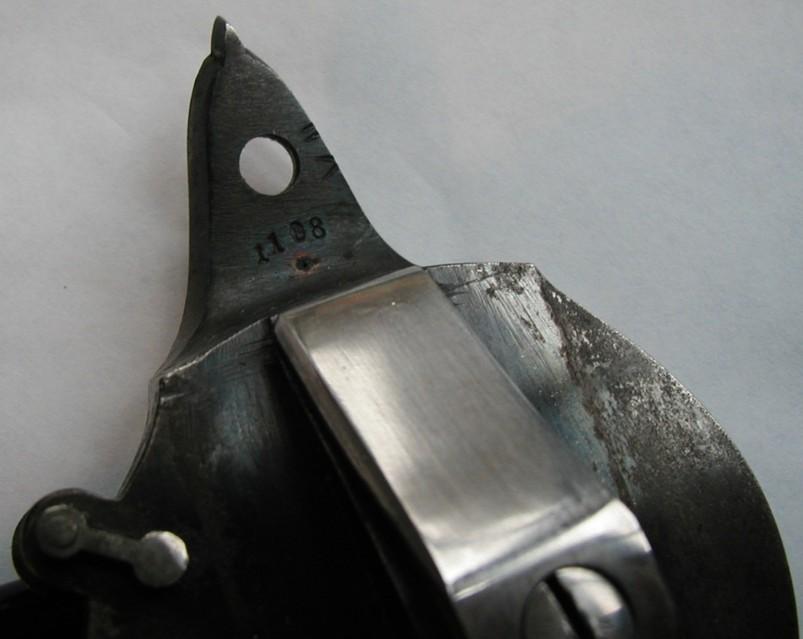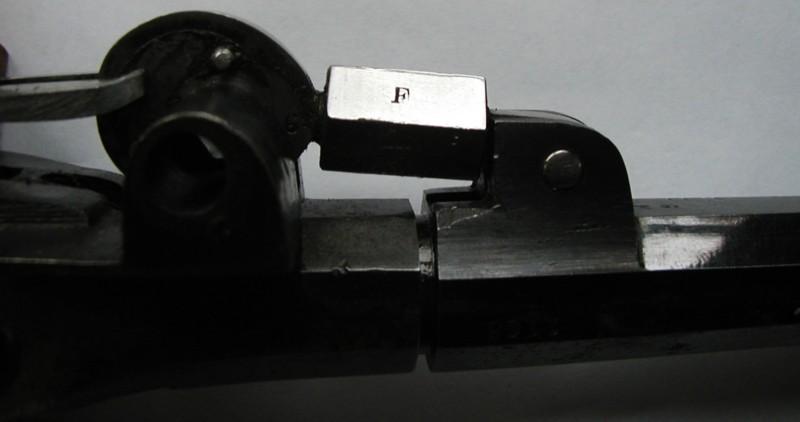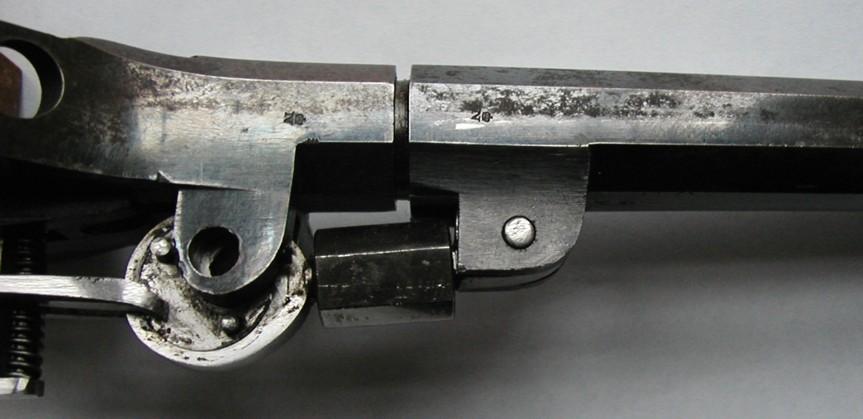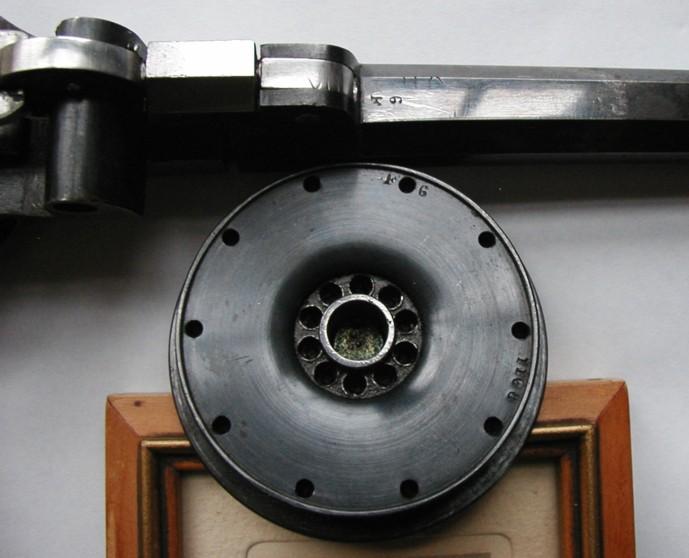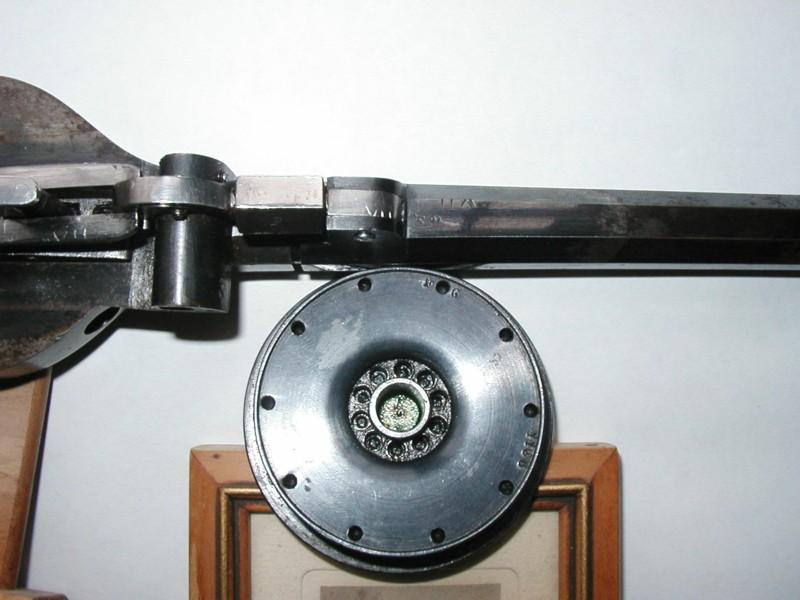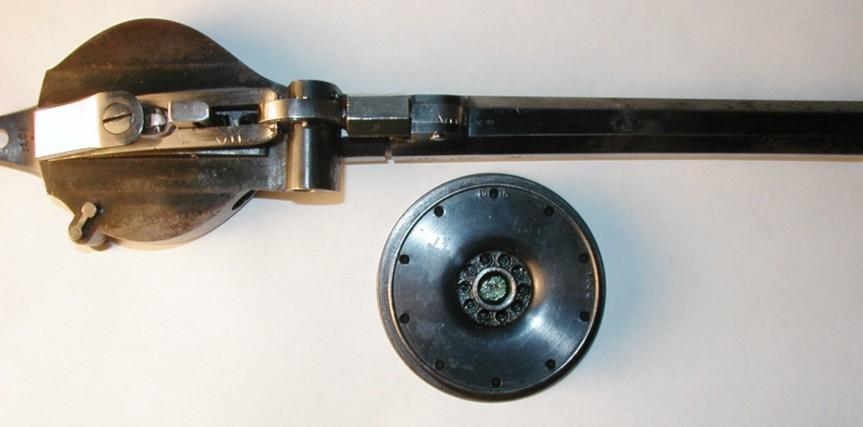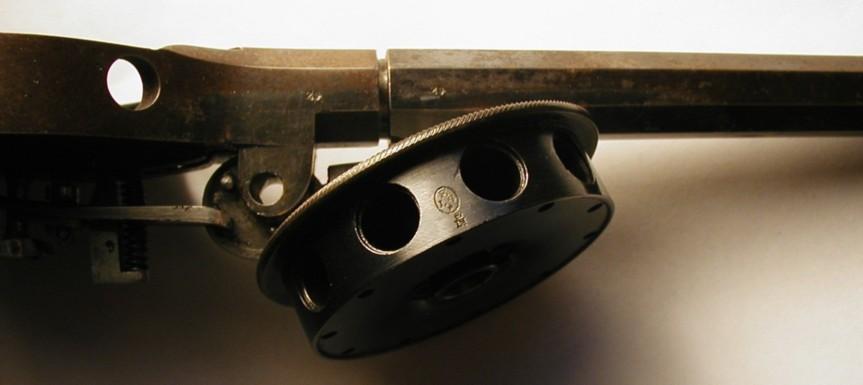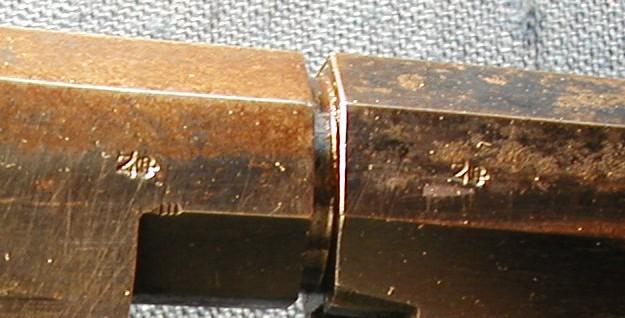Some of the most beautiful work of this craftsman, and many others, are in this book “Liège Gunmakers through their Work. 1800 - 1950”.
For more detail see: LIEGE GUNMAKERS
Genhart
Photos Littlegun
This weapon is probably a prototype !!
Genhart
Photos Littlegun
Heinrich Genhart
Many thanks to the"Museum of weapons of Liège" for the pictures.
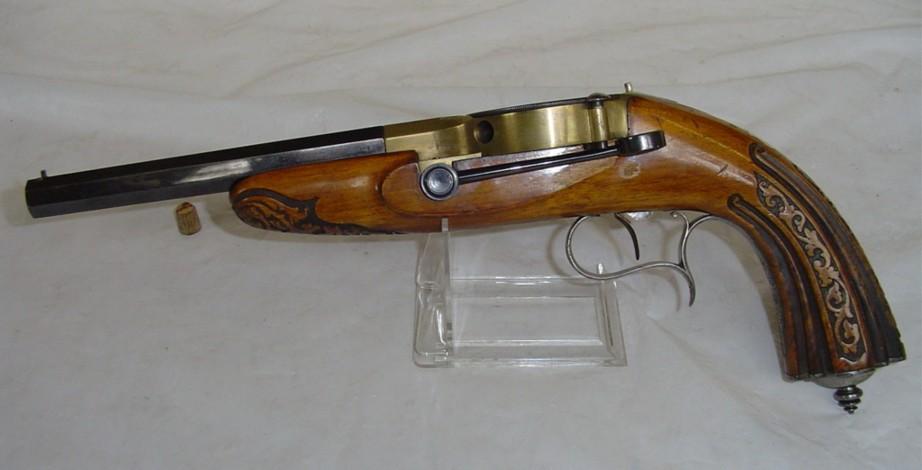
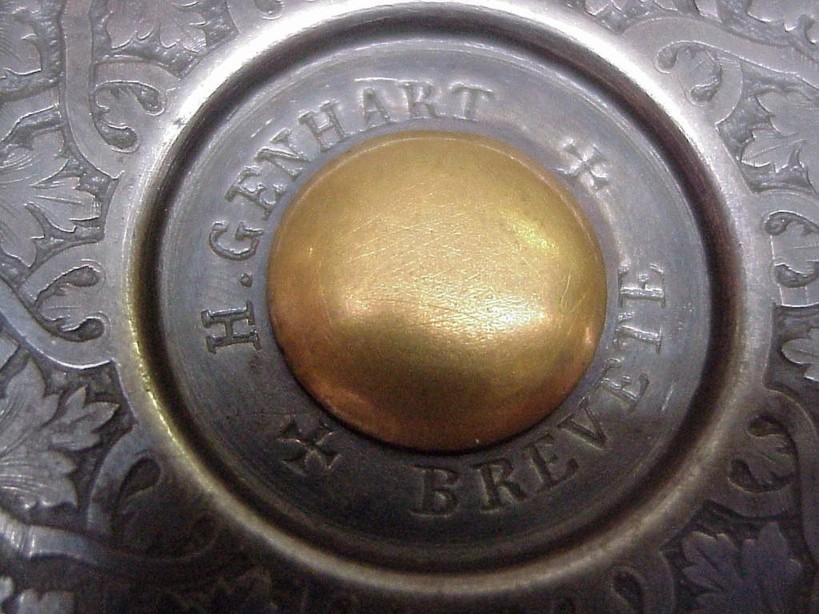
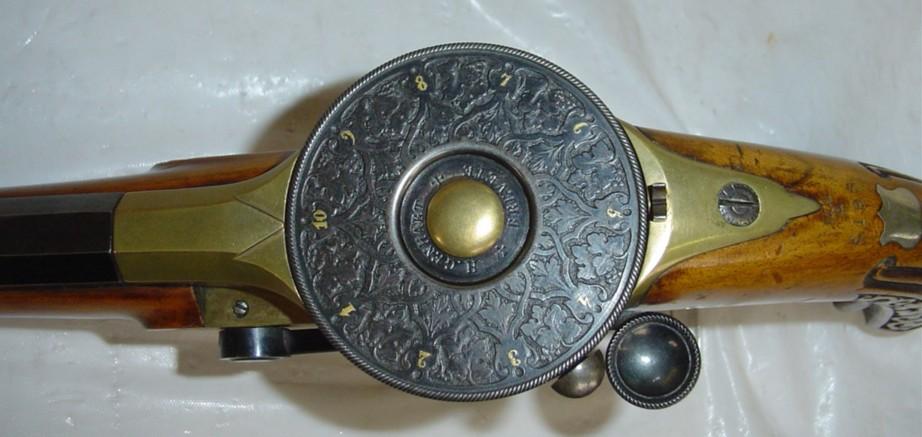
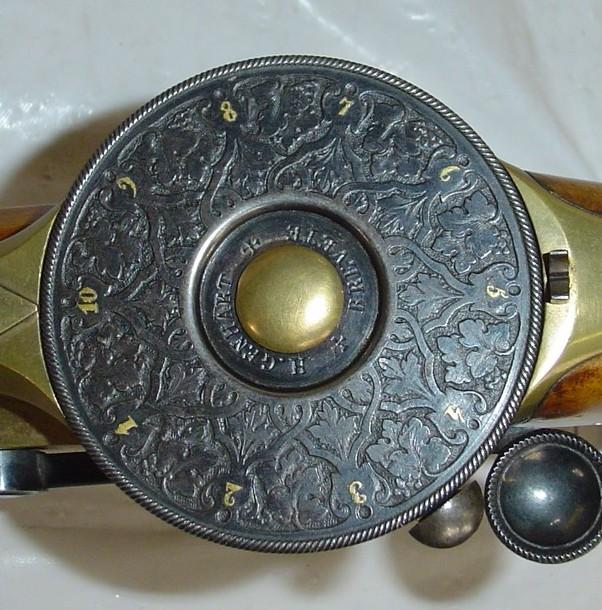
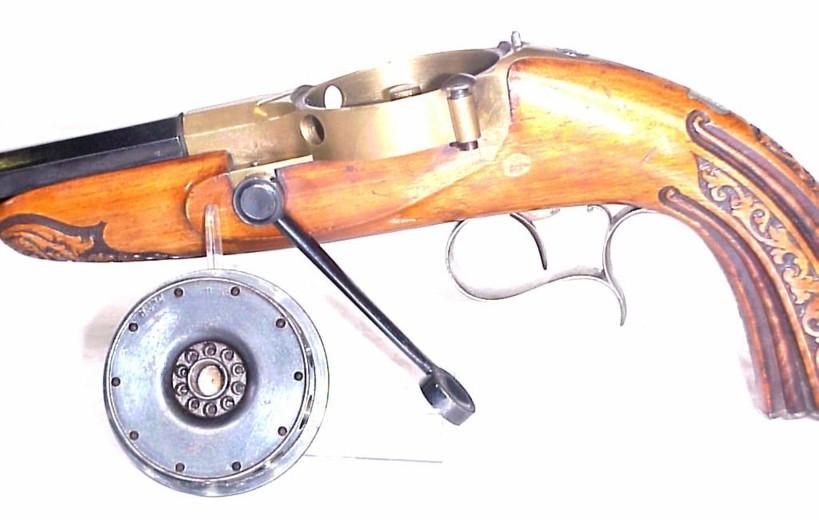
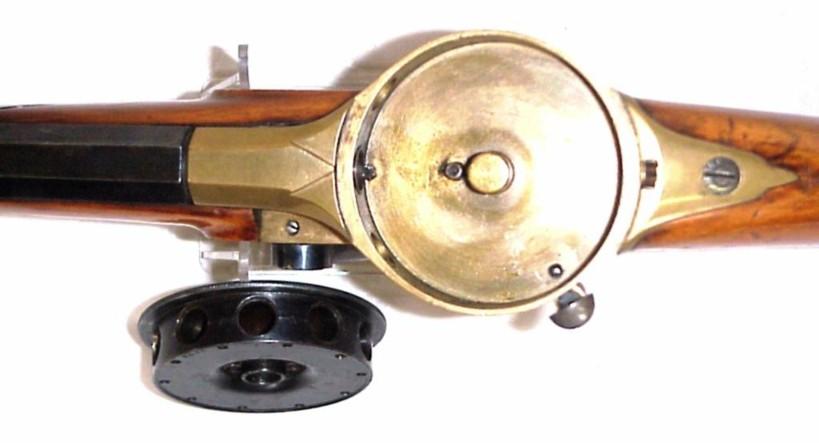
Heinrich GENHART
THE HEINRICH GENHART HORIZONTAL CYLINDER SYSTEM (or TURRET SYSTEM)
In the years 1850-1860, all manufacturers were possessed by the research on increasing the capacity of their firearms. Numerous systems saw light, sometimes for a very short while.
Many multishot weapons of different types can be seen at the Liège Museum of Arms, but the horizontal cylinder guns made by Heinrich Genhart, also called "turret revolvers» or "turret carbine", has drawn our special attention.
These guns were available in two versions: a handgun and a shoulder weapon.
The Genhart revolver
The gun we have examined at the Museum is an H.GENHART breveté revolver, percussion system, featuring a horizontally placed cylinder with a capacity of ten rounds of the 9.5 mm calibre, and designed to use tube primers to ignite the cartridges.
This brass-framed gun is very well made; it has an octagon barrel with twelve grooves. The whole gun has been given a military style matt black finish. The trigger guard has a spur.
The grip is made of walnut and carved in the Renaissance-style, with a chiselled metallic buttplate. The cylinder lid is black engraved and each chamber is marked by gold inlaid figures from 1 to 10.
The patent
The weapon was patented in Belgium in 1856, this document could not be found with the Office of the patents in Brussels.
The markings
The revolver as the rifle carry the punches of the bench of test of Liege, namely spangled ELG in an oval struck the cylinder, punch of acceptance used of the 08.09.1846 to the 11.07.1893 and one N crowned struck the barrel, countermarks of the controller used of the 30.12.1853 to the 26.01.1877.
The working
The pistol has a sliding barrel with a laterally placed opening for loading. It has also a graduated cylinder, which turns on a vertically placed axis, and provided with holes for the tube-primers. A laterally placed rod at the left side causes the barrel to slide into the chamber muzzle and also brings the lock mechanism to full cock. The mechanism has a vertically moving firing pin.
The cylinder has to be taken out the receiver for loading and bringing a new cartridge in line with the barrel. A double opening in the brass receiver allows checking the number of fired rounds. The cylinder can only be removed when the rod has been pushed fully downwards.
The GENHART revolving carbine is dated 1856. It has a rifled barrel of the 10.5 mm calibre and a similar horizontal cylinder containing ten rounds and also using tube-primers. The cylinder turns on a vertically placed axis and has internal fire channels.
Unlike the revolver, the loading rod (or hendle) is placed at the right side.
To fire the weapon, only three movements are needed:
- Push the rod downwards
- Turn the cylinder 1/10 of a revolution
- Push the rod upwards again
The action is the same on the revolver, apart from the fact the cylinder has to be turned clockwise instead of counter clockwise.
One will notice the very nice quality of this carbine, which can be fitted with a double bayonet (see fig 1).
The cartridges
The photograph below shows the tools needed for the make of tube-primed cartridges.
Fig 4 shows a vertical cut of a cartridge mould, with in the bottom an opening in which the cylindrical pin "Y" fits. The pin is removable.
Fig 3 shows an iron mandrel of a smaller diameter than the mould opening, and with a hole at one end.
Fig 2 shows a stamp part provided with a conical or spherical cavity, depending on the shape of the bullet.
The cartridge shell is made of tin or lead foil, as thick as common mail paper, yet tin is preferable. the foil is cut into square pieces that must be larges enough to be wrapped 1 1/4 turn around the iron mandrel, and long enough to pass it over a quarter of an inch. The iron pin is wrapped into one of these small foils, cutted as above, and the top is closed by squeezing and rolling with the fingers the part which is passing over.
Then it is put into the mould, and the iron pin is tapped gently with a hammer, and then taken out while the foil is held in place.
The cartridge is then carefully filled with the exact quantity of powder, and the bullet is seated home down to the mould edge.
Tapping gently the iron pin at the opposite side causes the cartridge to come out of the mould.
The iron pin in the mould has made a cylindrical cavity at the rear of the cartridge, in which the tube-primers fit exactly to half the length.
After having made a sufficient amount of cartridges, provided with their primers, one has to lubricate them with a mix of 1/4 wax and 3/4 animal grease.
The rear of the cartridge is put into the mix, which becomes hard after a while.
Large and small cartridges are made following the same procedure. The primers are identical for all cartridges.
The manufacturer
According to the advertising insert represented below, it is now certain that Heinrich GENHART had established a workshop to the 42 of the street To the Horses in Liege in the district of North.
Diffusion of the system
GENHART made his weapons essentially for export to the U.K., where the system was far better known as on the continent.
He also offered his rifles to the British government. After having fired 200 rounds in 15 minutes with a heavy calibre rifle at 600 m range, the conclusion was made. The barrel muzzle was so hot that it could ignite fine powder, and the wooden parts were smoking. However, this did not prevent the test to be carried on without losing precision.
Another test was made at the shooting school of Vincennes: the inventor fired 30 rounds in 30 minutes, at a distance of 250 m. All except the two first, were placed in the white area of about 50 cm. The result was called extraordinary; but Captain MINIE, who was asked by the French government to report on the GENHART weapons, estimated it was not serviceable due to its weight and the difficulty of loading. The rifle weighed 6,250 kg!
Despite that negative report, the French government ordered a small number of rifles, but GENHART proved unable to deliver them!
The inventor has been registered as an official arms maker for only two years, which excludes an important production of his arms.
The inventor
Very few are known about Heinrich GENHART. According to the author John Deane, he was an artillery officer in the Swiss army. He has been registered at the Liège register of arms manufacturers from 1857 to 1859. He seems to have lived in different European countries, especially in England and Belgium, at Liège. The etch below shows him with his weapons.
G.G.
Another revolver Genhart
Many thanks to the collector who have send these photos.
